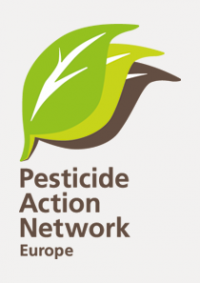Press releases
Today an employee of German chemical multinational BASF, Mr. Bernhard van Ravenzwaay, will officially get a professor seat at Dutch agricultural university of Wageningen in exchange for BASF-funding.
PAN Europe warmly welcomes the vote of European Member States in favour of the proposal of the European Commission to ban 3 neonicotinoids (imidacloprid, thiamethoxam and clothianidin) toxic to bees for 2 years. After nearly 20 years of fight of beekeepers and environmentalists, this historical vote is a strong signal given by Europe on environmental protection.
Last Friday, Member States obtained no qualified majority on the vote on the proposal of the European Commission to temporary ban 3 harmful neonicotinoid insecticides to bees.
The opinion of the European Food Authority EFSA on endocrine disruption as published today is a big disappointment for PAN Europe.
Food Authority EFSA claims in their just released 2010-pesticides residue European monitoring report that pesticide residues in food pose no long-term risks to humans. PAN Europe feels this claim is totally unjustified since EFSA doesn’t calculate the numerous mixtures of pesticides in the food sold in European shops and assumes people are exposed to only one single pesticide in their entire life.
25 Million kg of a very hazardous pesticide, the soil fumigant Metam Sodium, is released in the European environment every year based on an exception created by DG SANCO and the EU Member States that bans Metam but at the same time allows its use as “essential use”.
It is too late to change the entire logic of the Common Agricultural Policy which is currently being reformed in the EU, though, the plenary of the European Parliament has the opportunity to get the reform proposal back on track, by reintroducing a green component, focused around real crop rotation.
How pesticides industry twists facts and figures to scare European decision-makers on neonicotinoids
Today the European Landowner Association (ELO),supported by Syngenta, is organising its 6th Forum for the Future of Agriculture, ahuge conference addressed by a number of key speakers with this year catchy title being „Meeting the food and agricultural challenge – Sustainable intensification of food production”.
19 years after the first massive honeybee colony losses reported by beekeepers on imidacloprid-treated sunflower crops in France, the European Commission finally declared its intention to move concerning neonicotinoids.
Food Authority EFSA concluded today that seed-coating with the pesticides Imidacloprid, Thiamethoxam and Clothianidin -all neonicotinoid insecticides- poses a high direct risk to bees from crops producing nectar and pollen such as sunflowers, oilseed rape and cotton.
